This post is by guest bloggers Delaney Moon and Emma Susman of Cal Poly’s Marine Sciences Program.
Morro Bay is home to a large variety of sea life. The native Olympia oyster (Ostrea lurida) is just one of the many invertebrate species that once thrived in the intertidal zone of the estuary. Cal Poly’s Marine Sciences Department and California Sea Grant are leading efforts to study the Olympia oyster in Morro Bay.
What is the Olympia oyster?
Olympia oysters range from Alaska to Panama and are the only oyster native to the Pacific northwest coast of North America. These animals can be found attached to hard substrates such as rocks, pilings, or other shells. Olympia oysters were once so abundant across the coast of northern California that they comprised a major food source for Indigenous people.
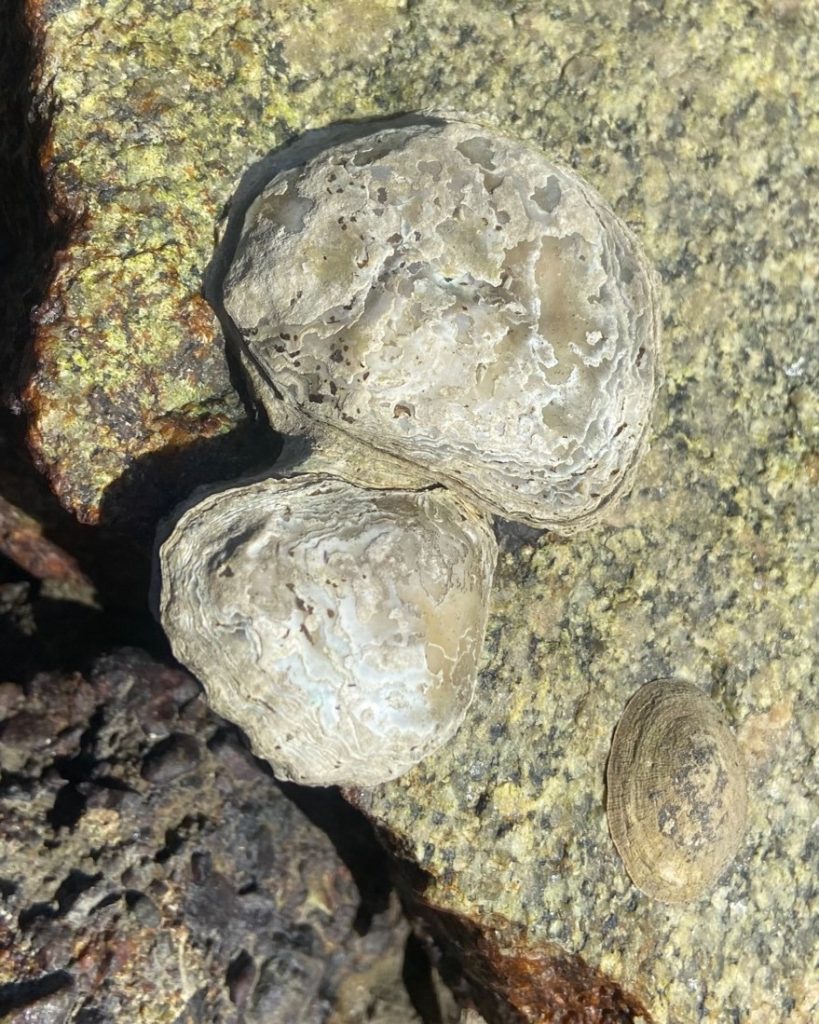
Morro Bay was no exception, as the Chumash were known to harvest oysters readily (Winslow, 2006). However, with the influx of European settlers in the late 1840s and 1850s and more recent environmental degradation, the Olympia oyster population has steeply declined. A research survey conducted in 2009 showed an absence of Olympia oysters in the Morro Bay estuary. With our study, we hoped to demonstrate that these important mollusks are on the road to recovery in Morro Bay, and with monitoring and restoration efforts, they may be able to make a sustainable comeback.
Oysters are important to estuarine environments
Oysters are considered a keystone species, which means they are extremely important to water quality and turbidity and provide habitat for other species to attach to. Oysters feed by filtering food from the water they live in, which helps keep the bay waters clear.
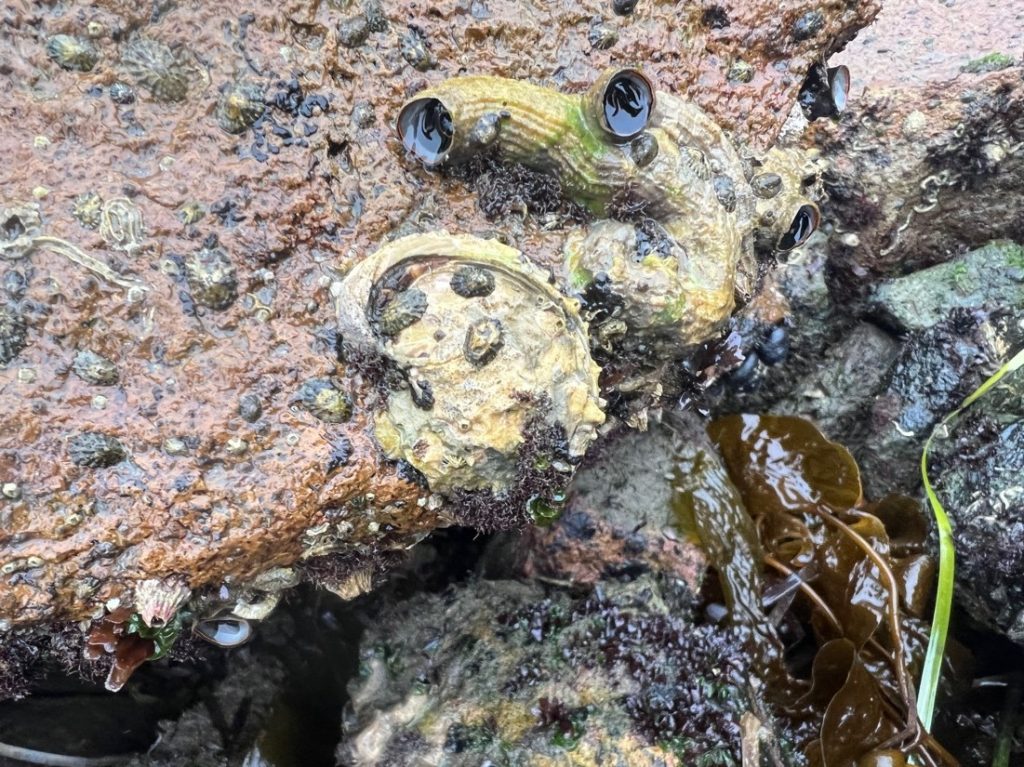
One single oyster can filter up to two gallons of water per hour, which equates to about 50 gallons a day (Koenig, 2022)! This filtration helps keep the bay waters clean and transparent. Filter feeding reduces the risk of harmful algal blooms (“Environmental Benefits of Shellfish”) and improves water clarity which increases light penetration through the water. Increased light helps eelgrass and other healthy marine plants grow.
Status of oysters in Morro Bay
The population of Olympia oysters throughout their species’ range has plummeted due in part to loss of habitat, disease, pollution, and overharvesting. This decline began at the onset of the California Gold Rush in 1848 and has continued to the present day. In addition, oysters are affected by human-caused carbon emissions and the resulting ocean acidification, which inhibits the formation of their shells. Olympia oysters were historically present in Morro Bay, but the negative impacts of overharvesting and carbon emissions have not allowed the species to re-establish fully in the area (Polson, Maria P., and Danielle C. Zacherl, 2009).
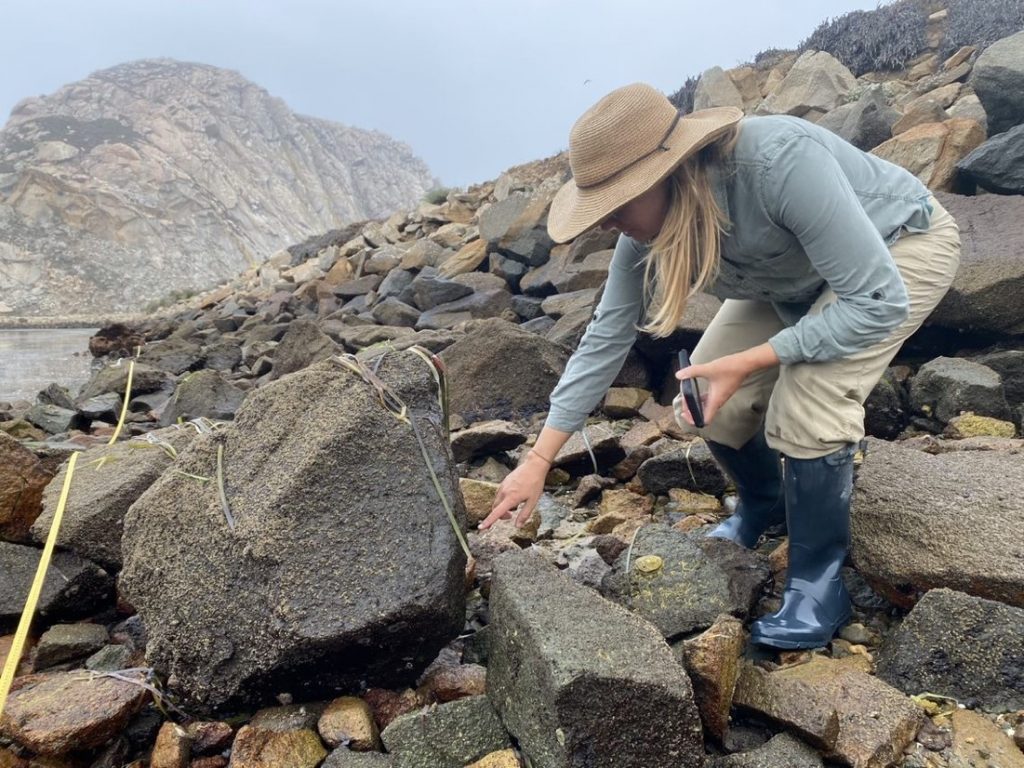
Our surveys in Morro Bay showed the presence of Olympia oysters in many study locations. This indicates that the Olympia oysters may be making a comeback in the bay. We found a total of 482 Olympia oysters over the course of three low-tide cycles in July and August 2022.
How we monitored
We monitored Olympia oysters (Ostrea lurida), Jewel Box oysters (Chama spp.), and Pacific oysters (Crassostrea gigas). Surveys were conducted during the lowest tide windows of July and August from the breakwater to Windy Point. Fifty-meter transects were set up in the intertidal zone parallel to the shoreline. For every transect, the number of Olympia oysters, Olympia oyster scars, Chamas, and Pacific oysters were recorded.
We also measured oyster larvae recruitment. We set tiles in different areas throughout the bay. Floating oyster larvae would settle on these plates. We checked them periodically for the presence of larvae to help tell us where in the estuary and what times of year Olympia oysters are reproducing.
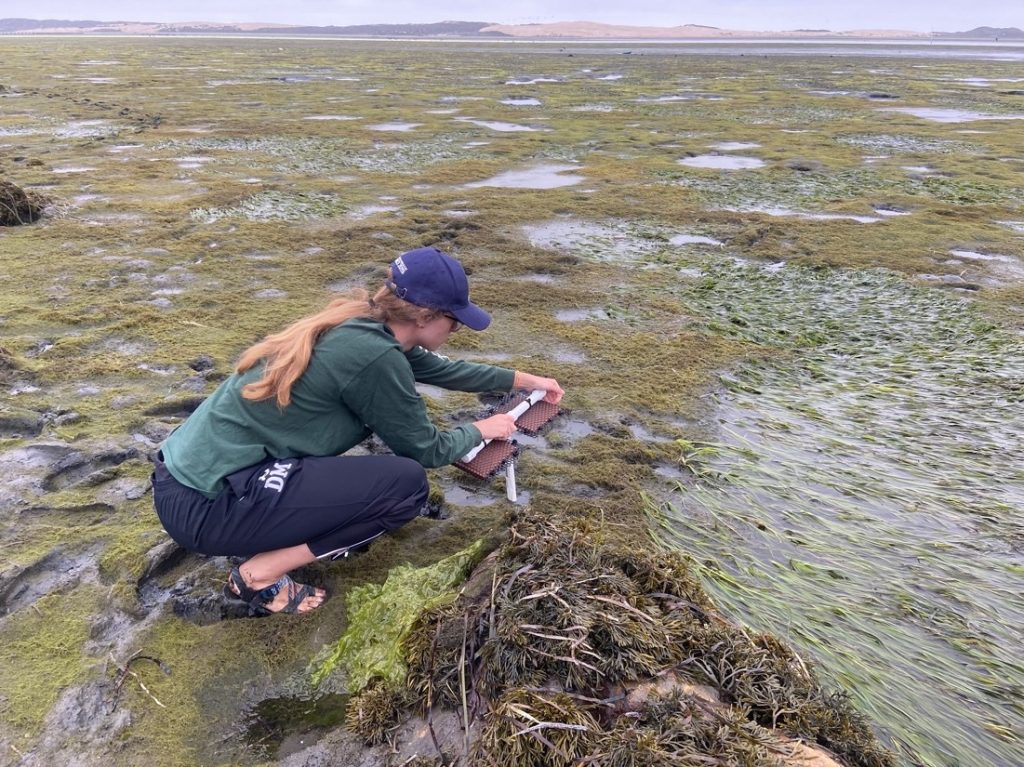
We placed small tiles in three intertidal areas to track oyster larvae settlement on the tile. We collected, replaced, and made observations about the tiles every two weeks throughout the summer. Attached species were also identified and counted using a dissecting microscope.
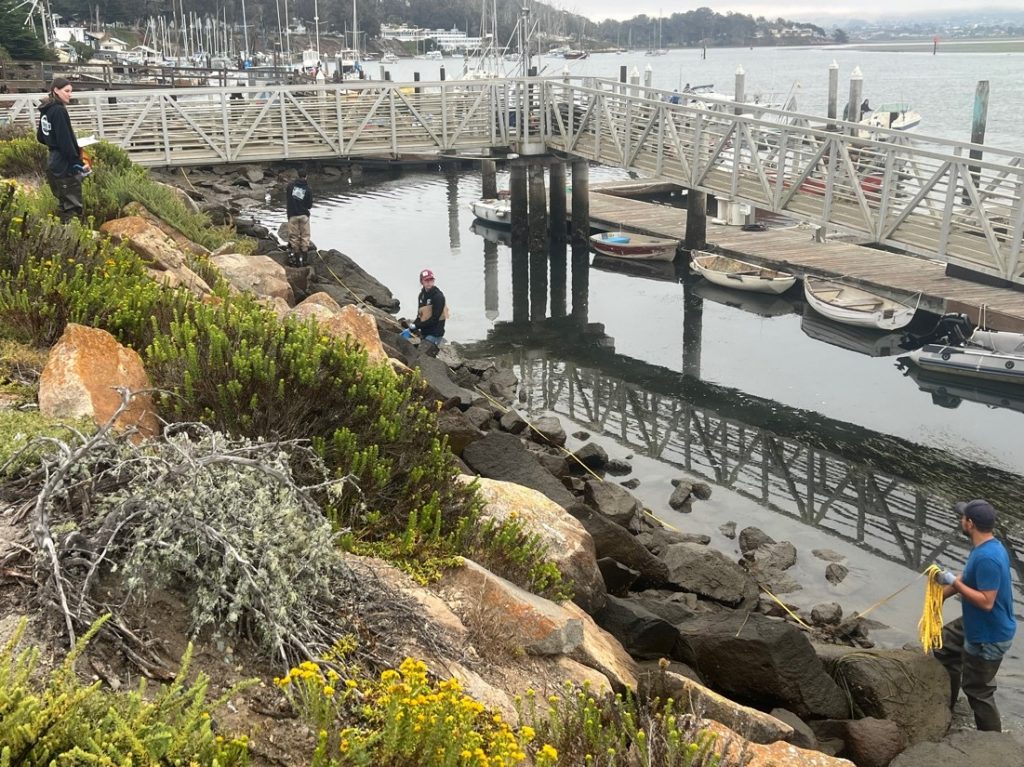
Oyster monitoring results
Our monitoring survey found 482 native Olympia oysters, 393 oyster scars (spots where oysters previously were), 931 chamas, and 2 total Pacific oysters present from the breakwater to Windy Point.
Our recruitment tile monitoring found a total of five juvenile Olympia oysters at Tidelands Park. These recruitment events were the first observed in two years of monitoring.
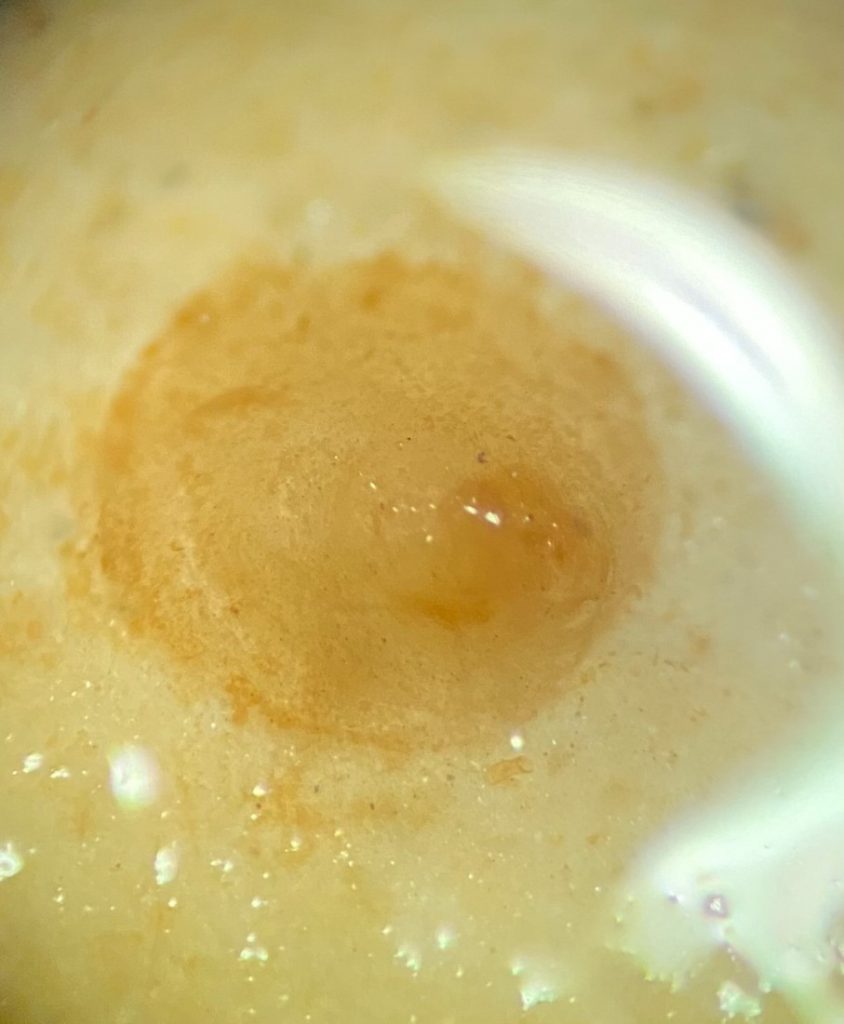
What the results tell us
In contrast to the previous 2009 study in which no Olympia oysters were detected in Morro Bay, we found these oysters in a limited number of locations that had appropriate substrates. The infrastructure of Morro Bay’s piers and rocks serve as hard materials for oyster larvae to attach to. We also noticed that Olympia oyster larvae do not attach to Pacific oyster shells which is consistent with the findings from the 2009 study. Further studies should focus on monitoring the deeper depths of the subtidal zone
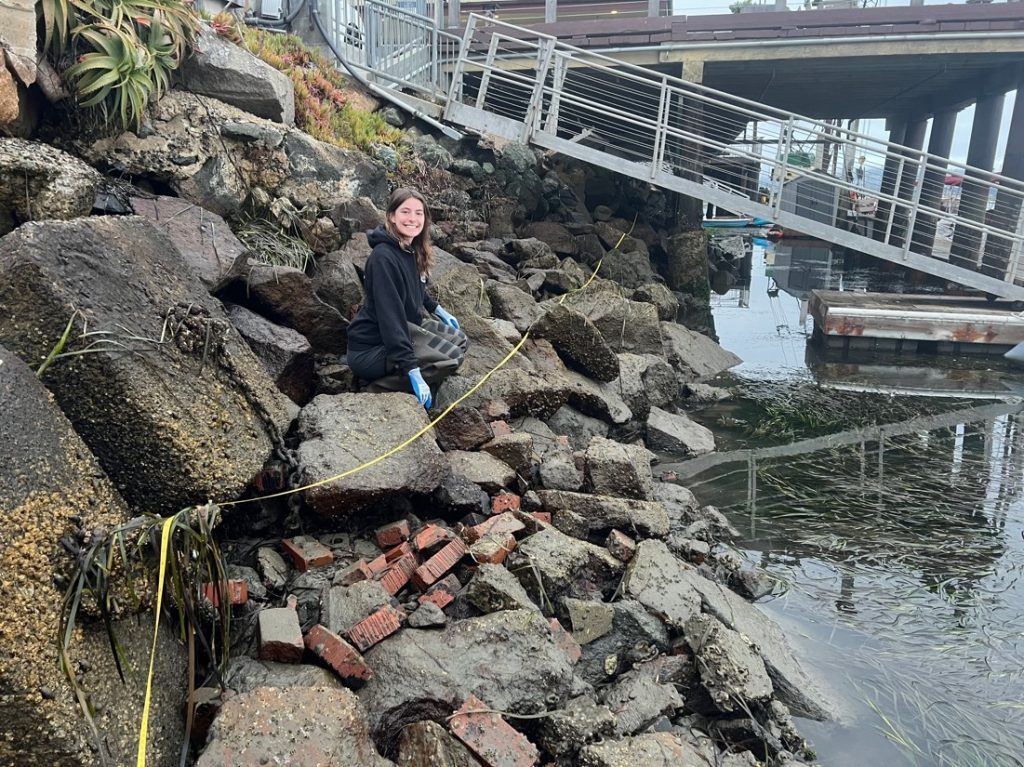
Monitoring Olympia oysters help restoration efforts
The data helps us identify hotspots and areas that have a high density of oysters. This tells us which areas they prefer so that efforts can be made to protect these habitats. The data from the tiles tells us when and where oysters reproduce, which indicates the best location and timing for any oyster restoration efforts. Future surveys will track overall population growth throughout the estuary and provide data on where Olympia oysters are successfully growing.
Works Cited:
“Environmental Benefits of Shellfish.” Connecticut Department of Agriculture, Feb. 2022, https://portal.ct.gov/DOAG/Aquaculture1/Aquaculture/Environmental-Benefits-of-Shellfish-Aquaculture.
Koenig Erin “Can Clams and Oysters Help Clean up Waterways?” Woods Hole Oceanographic Institution, 10 Aug. 2022, https://www.whoi.edu/oceanus/feature/can-clams-and-oysters-help-clean-up-waterways/.
Polson, Maria P., and Danielle C. Zacherl. “Geographic Distribution and Intertidal Population Status for the Olympia Oyster, Ostrea Lurida Carpenter 1864, from Alaska to Baja.” Journal of Shellfish Research, vol. 28, no. 1, 2009, pp. 69–77., https://doi.org/10.2983/035.028.0113.
Winslow, Carleton. “CHUMASH INDIAN MOUNDS.” USGENWEB Archives – Census Wills Deeds Genealogy, 23 Nov. 2006, http://files.usgwarchives.net/ca/sanluisobispo/photos/chumashi65gph.txt.
Help us protect and restore the Morro Bay estuary!
- Donate to the Estuary Program today and support our work in the field, the lab, and beyond.
The Estuary Program is a 501(c)3 nonprofit. We depend on funding from grants and generous donors to continue our work. - Support us by purchasing estuary-themed gear from ESTERO. This locally owned and operated company donates 20% of proceeds from its Estuary clothing line and 100% of Estuary decal proceeds to the Estuary Program. Thank you, ESTERO!
- Purchase items from the Estuary Program’s store on Zazzle. Zazzle prints and ships your items, and the Estuary Program receives 10% of the proceeds.
Thank you for helping our beautiful, bountiful, biodiverse bay!